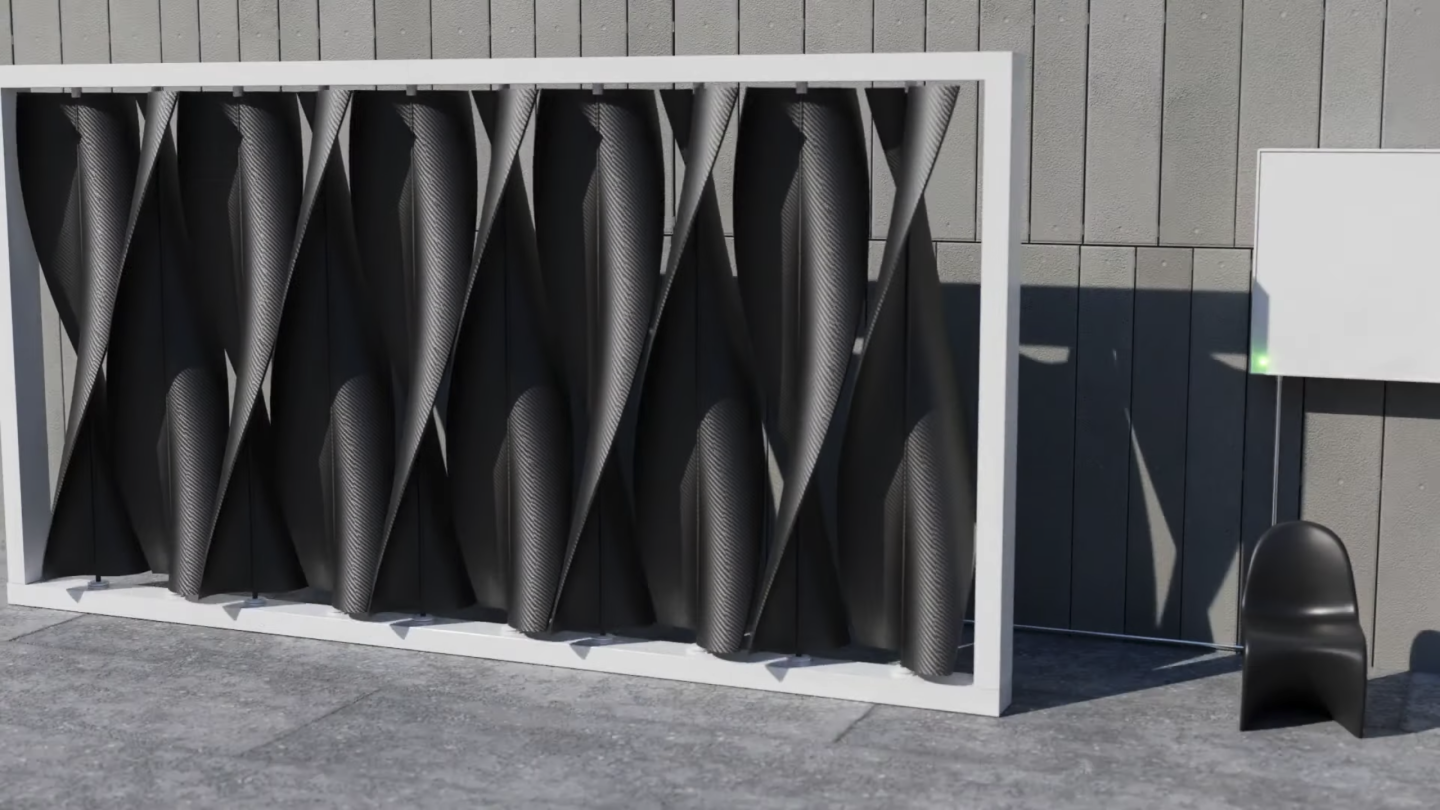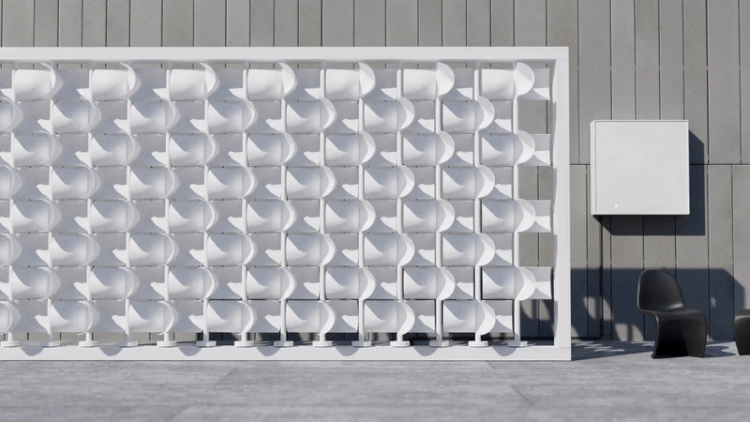NYC-based designer Joe Doucet arranged and set up several “kinetic walls” with the help of rotary wind turbines to achieve some hypnotic visual effects that are massively aesthetic.
Each wall would have around 25 vertical turbines, each connected to a 400-watt generator for a total peak power output of 10 kW. Like a rooftop solar setup, these could either be connected to the grid or run through a battery system for storage. Doucet says they’ll be “almost silent,” producing “no more noise than a gentle whirling,” and safe for use around children. There are no pinch points on the designs and the turbines are so lightweight that even children can stop them from turning.

Capable of catching the wind from any direction but the vertical, they could run as a standalone system or be paired with a solar array to generate power at overlapping times. Doucet says he wants to keep these walls “very affordable,” and is “interviewing potential partners to bring this thing to make.”
Ten kilowatts of power is quite impressive as it is a useful amount of power, considering that the average US home uses around 30 kWh of energy daily. Ten kW delivered all day and night could power the entire street conveniently.
However, the average capacity factor for land-based wind turbines in the US is around 35 percent, so if these kinetic walls performed at a similar capacity factor to the whopping big three-blade horizontal-axis industrial wind turbines dotted along windy American coastlines, you could expect more like 84 kWh a day.
Still, it will not be this much as the blades are not that efficient. The vertical-axis turbines by their very design can only have one surface catching the wind at a time. And they lose more power as the wind blows on the back of the blade coming back around.

They’re also designed to be mounted at ground level around houses, rather than high up in the air near strong coastal winds. So, the breezy pickings will be slim in most locations, and that’s worse news than it sounds since wind power is proportional to the cube of wind speed.
Basically, Doucet’s wind turbine walls look neat, but we’d be surprised if they made a useful amount of power or sold cheaply enough to pay for themselves quicker than a solar array. They’re probably best viewed as kinetic sculptures, with any energy output being a bonus.


